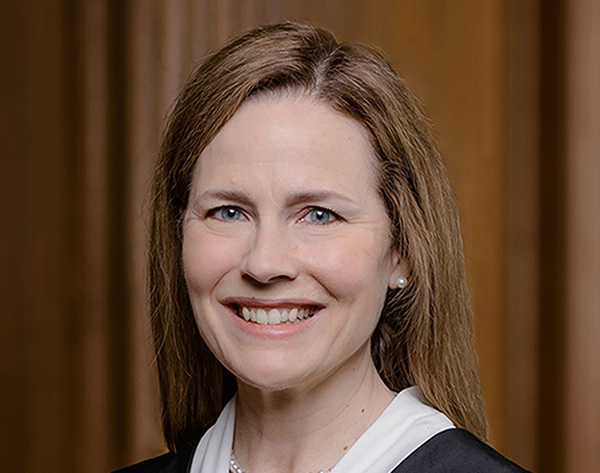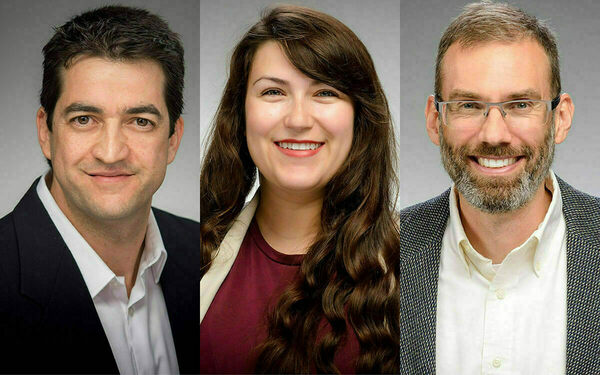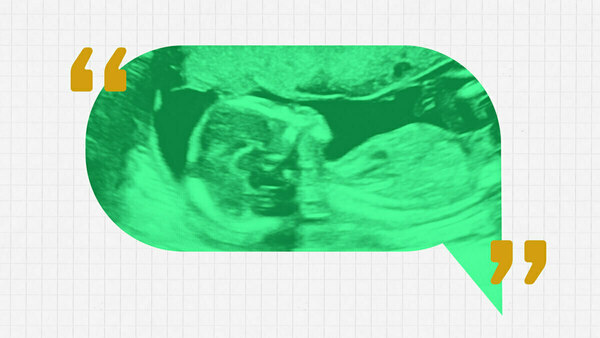'Hybrid’ disaster response shows how localization saves lives

In August 2021, an earthquake struck southwest Haiti, killing thousands of people and leaving more than half a million seeking help. Assessment of this disaster and its response can serve as a model for evaluating future disasters and making life-saving improvements, according to new research from a University of Notre Dame professor.
Tracy Kijewski-Correa, professor of engineering and global affairs and the William J. Pulte Director of the Pulte Institute for Global Development, part of Notre Dame’s Keough School of Global Affairs, was the lead author for the study, published in the Bulletin of Earthquake Engineering.
“This research shows how the 2021 earthquake response in Haiti leveraged both local data collection and remote expertise on a large scale to quickly assess the damage and inform local decision makers,” Kijewski-Correa said. “This hybrid approach shows how we can proactively embrace localization, empowering affected populations to play a significant role in generating solutions.”
A hybrid disaster assessment approach

Kijewski-Correa, partners at GeoHazards International and students at Notre Dame helped coordinate the assessment, which she said unfolded amid travel constraints following the assassination of the Haitian president in July 2021. But going hybrid turned out to be an advantage: Small teams of Haitians used smartphones to share data and images with remote engineers.
This divide-and-conquer approach allowed responders to cover more ground more quickly than they could have with a conventional arrangement where engineers traveled to see damage sites firsthand, Kijewski-Correa said. And after any disaster, she said, gathering forensic information quickly, before debris shifts, is critical to determining what caused the damage.
Responders captured a representative sample of different building classes, including residential, educational, commercial, government and medical facilities, Kijewski-Correa said, facilitating a rapid assessment that assigned global damage ratings to more than 12,500 buildings.
Next, remote engineers used machine learning to analyze approximately 40,000 collected images and to identify some 200 homes that were built using traditional Haitian construction, Kijewski-Correa said. This, in turn, enabled data collectors in Haiti to conduct forensic documentation of 30 of these homes that performed well in the earthquake using another mobile app.
Leveraging traditional building techniques
The results were surprising, Kijewski-Correa said: Structures built using traditional Haitian construction fared better than those built with contemporary concrete and masonry approaches that experts had been touting in Haiti. She said the traditional homes’ bracing scheme, which determines how buildings distribute and support the shock imparted by the earthquake, made all the difference.
“This was a crucial takeaway,” Kijewski-Correa said. “Our data showed that traditional Haitian building techniques performed better than poorly implemented modern construction approaches we had recommended in the past. This has key implications for how we should build in Haiti, which has widespread informal construction, lacks mortgages or well-documented land rights, and experiences higher poverty rates.
“In this cultural context, these traditional Haitian approaches are more sustainable on every front,” Kijewski-Correa said. “They use local materials and skill sets, are easier to repair when damaged, and have lower costs and smaller carbon footprints. We absolutely need to promote more of this approach.”
Strengthening disaster resilience

Kijewski-Correa has shared takeaways from the earthquake assessment with researchers and humanitarian responders, including those at the World Bank, to help better support housing recovery after major disasters.
The resulting study received funding from the National Science Foundation, the United States Geological Survey and USAID through the partnership with GeoHazards International, and from the International Scholars Program at the Keough School’s Kellogg Institute for International Studies.
Kijewski-Correa co-authored the study with Eric Canales and Lamarre Presuma (graduates of the Keough School’s Master of Global Affairs program), Notre Dame engineering graduate student Rachel Hamburger, and former Kellogg International Scholars Angelique Mbabazi and Meredith Lochhead. The research is part of the Bulletin of Earthquake Engineering’s special issue on remote data collection and analysis methods for disaster reconnaissance.
The study has implications for building more sustainably in low-income countries and for promoting localization in disaster assessments, Kijewski-Correa said.
“For years, organizations such as USAID have increasingly emphasized localization, or empowering local people to take a leadership role in programs,” Kijewski-Correa said. “But there has been real reticence to extend that to life safety professions such as engineering because the assessments, if they’re wrong, could have deadly consequences.
“Our model shows that you can have a best-of-both-worlds approach that pairs local knowledge and remote networks with highly specialized engineering expertise. This innovative hybrid approach to localization helped us respond more effectively and ultimately uncovered a key finding that will improve housing recovery recommendations by leveraging local insights. This model can help vulnerable communities worldwide more swiftly learn from disasters and ideally build back better to reduce future risk.”
Originally published by Josh Stowe at keough.nd.edu on June 11.
Contact: Tracy DeStazio, associate director of media relations, 574-631-9958 or tdestazi@nd.edu
Latest Colleges & Schools
- Faculty receive prestigious early career awards from National Science FoundationDuring the 2024-25 academic year, four researchers in the University of Notre Dame’s Colleges of Engineering and Science received early-career awards from the National Science Foundation.
- ‘Prebunking’ false election claims may boost trust in electionsIn recent years, democracies worldwide have seen a growing erosion of trust in election outcomes and institutions, driven in part by fears of widespread fraud. New Notre Dame research finds that “prebunking” — providing accurate information before false claims spread — boosts trust in elections more effectively than traditional fact-checking.
- Justice Amy Coney Barrett to deliver Center for Citizenship and Constitutional Government lectureAmy Coney Barrett, associate justice of the Supreme Court of the United States, will speak at the University of Notre Dame at 4 p.m. Sept. 12 in the Leighton Concert Hall of the DeBartolo Performing Arts Center.
- Three Notre Dame researchers win NEH grants for humanities-based projectsDavid Hernandez, the Eli J. and Helen Shaheen Associate Professor of Classics, and Morgan Munsen, senior research and partnerships program manager at the Nanovic Institute for European Studies in the Keough School of Global Affairs, have each won an NEH Collaborative Research grant. Thomas A. Stapleford, associate professor in the Program of Liberal Studies, is leading a team that has been awarded a Humanities Research Center on Artificial Intelligence grant.
- Open-access database offers insights into U.S. congressional candidatesEach election cycle, thousands of candidates vie for seats in the U.S. House of Representatives and the Senate. Until now, there has been no comprehensive, publicly available resource cataloging what those candidates say about who they are or what they stand for. A new open-access database called CampaignView, created by researchers at the University of Notre Dame, offers researchers, journalists and educators a powerful tool to understand congressional elections.
- First impressions count: How babies are talked about during ultrasounds impacts parent perceptions, caregiving relationshipPsychologist Kaylin Hill studied the impact of a parent’s first impression of their baby during an ultrasound exam. The words used by the medical professional to describe the baby (positive or negative) influence how the parents perceive their baby, relate to them after they're born and even how that child behaves as a toddler. The research has broad implications for how we train medical professionals to interact with expectant parents, as well as how we care for parents during the perinatal period when they are most susceptible to depression.













